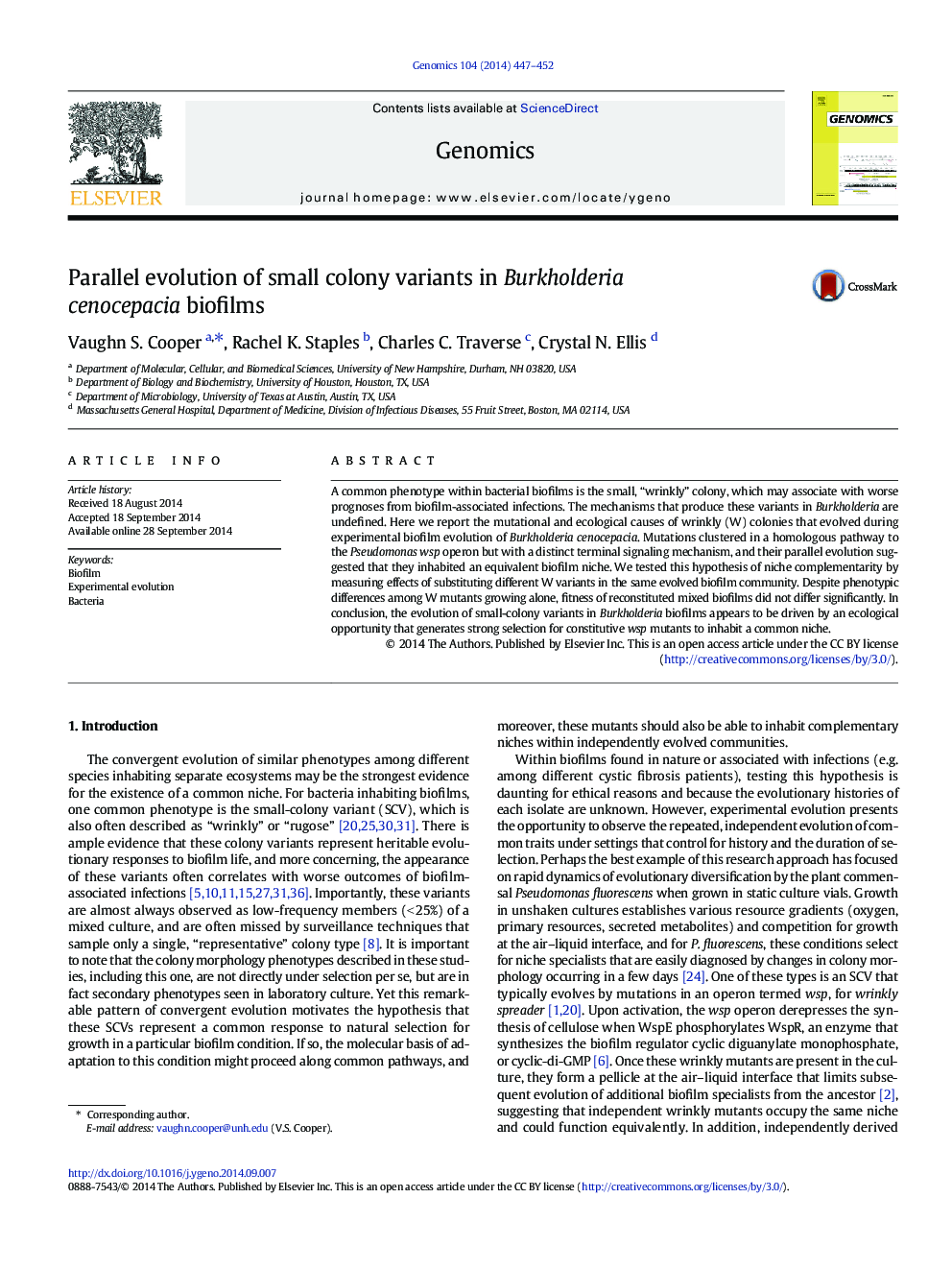| Article ID | Journal | Published Year | Pages | File Type |
|---|---|---|---|---|
| 5907937 | Genomics | 2014 | 6 Pages |
â¢Small colony variants (SCVs) of Burkholderia cenocepacia evolve by Wsp mutations.â¢Wsp mutants evolve rapidly under selection for surface adherence.â¢SCVs share a niche that enhances productivity of mixed biofilm communities.â¢Inherent ecology of biofilm SCVs may produce resistance without antibiotic pressure.
A common phenotype within bacterial biofilms is the small, “wrinkly” colony, which may associate with worse prognoses from biofilm-associated infections. The mechanisms that produce these variants in Burkholderia are undefined. Here we report the mutational and ecological causes of wrinkly (W) colonies that evolved during experimental biofilm evolution of Burkholderia cenocepacia. Mutations clustered in a homologous pathway to the Pseudomonas wsp operon but with a distinct terminal signaling mechanism, and their parallel evolution suggested that they inhabited an equivalent biofilm niche. We tested this hypothesis of niche complementarity by measuring effects of substituting different W variants in the same evolved biofilm community. Despite phenotypic differences among W mutants growing alone, fitness of reconstituted mixed biofilms did not differ significantly. In conclusion, the evolution of small-colony variants in Burkholderia biofilms appears to be driven by an ecological opportunity that generates strong selection for constitutive wsp mutants to inhabit a common niche.
